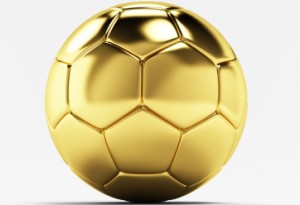Why have Real Madrid paid so much for Gareth Bale? It’s a commercial investment
Posted by Dr John Jewell

One of the most tedious but enduring stories of a summer packed with sporting incident has finally reached its climax: Gareth Bale has been bought by Real Madrid. This morning he had a medical at the club and was presented to the sponsors, media and some 20,000 fans at the Santiago Bernabeu at around 12 noon. For Real, this represents another shattering of the world record sum paid for a footballer: In 2001 they paid £45.6 million for Zinedine Zidane, in 2006 they paid £56 for Brazilian midfielder Kaka, and in 2009 they bought Christiano Ronaldo from Manchester United for £80 million. Bale has cost them around £86 million. Or €100 million, if you prefer. He will earn, we are told, £300,000 a week. In further unrelated news from Spain, youth unemployment has reached 56.1%.
So why are Real Madrid willing to pay these sums and sign a Bale on a six year contract? Why are they willing to risk this amount of money on a 24-year-old who, with only one truly stellar season behind him, is largely unproved as a ‘world class’ talent? The answer is because this isn’t a financial risk at all. According to Forbes magazine, Carlos Ancelotti’s team are bigger and more profitable than Manchester United. Moreover, they are the richest and most profitable of all global sports teams. Forbes state that Madrid, who ‘posted revenue of $650 million during the 2011-12 season, is worth $3.3 billion, more than any team in the world. Los Merengues generated operating income (earnings before interest, taxes, depreciation and amortization and player trading) of $134 million, more than any soccer team and second only to the NFL’s Dallas Cowboys ($227 million) among all sports teams.’
This is good business for arguably the world’s most famous club. They can afford to do this and what Bale can earn for himself and Real in the next few years through advertising, sponsorship, shirt sales and image rights will dwarf the sum originally paid. Real Madrid know this, of course. They have form in this area.
When David Beckham signed for the club in 2003, the BBC reported that as part of the deal he agreed to hand over 50% of all future sponsorship contracts for products he might agree to endorse. In 2009 Florentino Perez, the club’s billionaire president, said, ‘when Beckham came we went from earning €7m a year to €45m a year through our deals with our sponsors. There are certain players who are very profitable because they have spectacular commercial repercussions that earn the club money.’
If Bale continues his electric recent form then the sky’s the limit, as the pundits may say. I’ve written elsewhere about why sport generates huge capital and about the marketing phenomenon that is David Beckham. Adidas officials reckon that 10 million Beckham replica shirts have been sold in his career, and he really is the trailblazer in the exploitation of image and personal endorsements. In 2012, in the twilight of his footballing career, he earned more money for brand Beckham than he had ever done before. When he joined LA Galaxy in 2007 he had deals with Adidas, Gillette, Motorola, PepsiCo and Walt Disney. Since then he has partnered Giorgio Armani, Sharpie, Yahoo, Electronic Arts, Samsung Electronics, Burger King, Sainsbury and Breitling
Bale, whilst clearly not yet on Beckham’s phenomenal level as an endorser, is no slouch in the sponsorship stakes. Earlier this year he signed a three year deal with BT to become their sports ambassador and he currently enjoys a lucrative partnership with Adidas, who conveniently enough are a major sponsor of Real. Earlier this year he revealed how media savvy he was by trademarking his goal celebration, the ‘eleven of hearts’. According to brand analyst Nigel Currie, this alone could make him up to £3 million a year. Now Bale can apply his personal signifier on headgear, footwear, jewellery and clothing as well as various leather goods including travelling bags and umbrellas. Added to this, on top of the €7 million Euro a year he will earn he gets to retain 60% of his image rights. According to realmadridnews.com he becomes the first player to own more than 50% in that respect. This in itself is staggering and an indicator of how Real Madrid see the player’s future.
The purchase of Bale is a sporting and commercial investment, and not financial mismanagement. What Real Madrid have done is nothing new – they are continuing to communicate their financial strength and global brand standing. They paid this amount of money for Bale not only because they could, but also because of the message of strength and ambition it sends out the rest of the sporting world. In many ways it suits Real Madrid to pay over the odds, to intimidate the market it seeks to dominate.
Meanwhile, UNICEF have reported the high unemployment rate and economic slump in Spain have increased the number of children living below poverty line.
